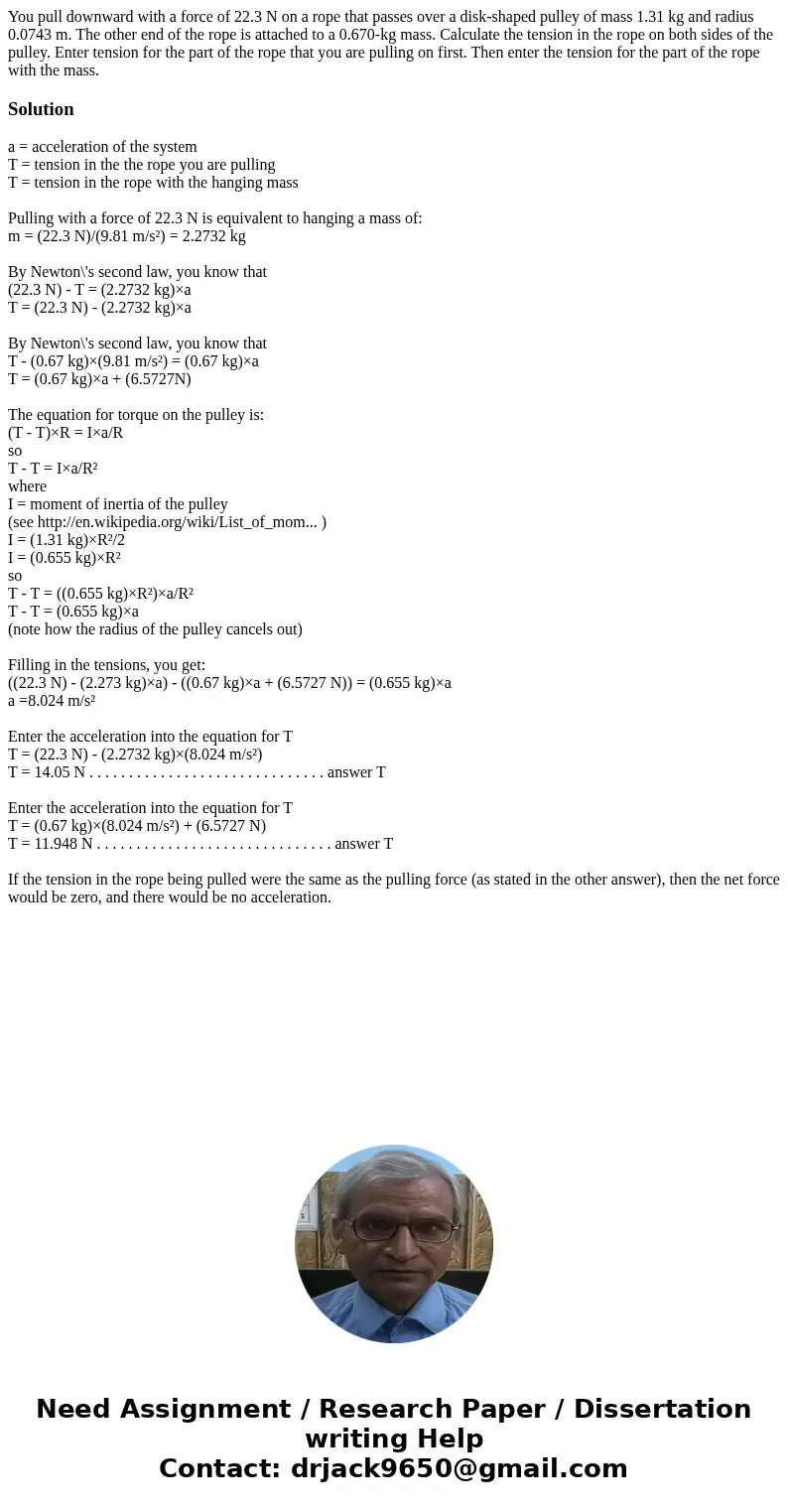You pull downward with a force of 223 N on a rope that passe
You pull downward with a force of 22.3 N on a rope that passes over a disk-shaped pulley of mass 1.31 kg and radius 0.0743 m. The other end of the rope is attached to a 0.670-kg mass. Calculate the tension in the rope on both sides of the pulley. Enter tension for the part of the rope that you are pulling on first. Then enter the tension for the part of the rope with the mass.
Solution
a = acceleration of the system
T = tension in the the rope you are pulling
T = tension in the rope with the hanging mass
Pulling with a force of 22.3 N is equivalent to hanging a mass of:
m = (22.3 N)/(9.81 m/s²) = 2.2732 kg
By Newton\'s second law, you know that
(22.3 N) - T = (2.2732 kg)×a
T = (22.3 N) - (2.2732 kg)×a
By Newton\'s second law, you know that
T - (0.67 kg)×(9.81 m/s²) = (0.67 kg)×a
T = (0.67 kg)×a + (6.5727N)
The equation for torque on the pulley is:
(T - T)×R = I×a/R
so
T - T = I×a/R²
where
I = moment of inertia of the pulley
(see http://en.wikipedia.org/wiki/List_of_mom... )
I = (1.31 kg)×R²/2
I = (0.655 kg)×R²
so
T - T = ((0.655 kg)×R²)×a/R²
T - T = (0.655 kg)×a
(note how the radius of the pulley cancels out)
Filling in the tensions, you get:
((22.3 N) - (2.273 kg)×a) - ((0.67 kg)×a + (6.5727 N)) = (0.655 kg)×a
a =8.024 m/s²
Enter the acceleration into the equation for T
T = (22.3 N) - (2.2732 kg)×(8.024 m/s²)
T = 14.05 N . . . . . . . . . . . . . . . . . . . . . . . . . . . . . . answer T
Enter the acceleration into the equation for T
T = (0.67 kg)×(8.024 m/s²) + (6.5727 N)
T = 11.948 N . . . . . . . . . . . . . . . . . . . . . . . . . . . . . . answer T
If the tension in the rope being pulled were the same as the pulling force (as stated in the other answer), then the net force would be zero, and there would be no acceleration.

 Homework Sourse
Homework Sourse